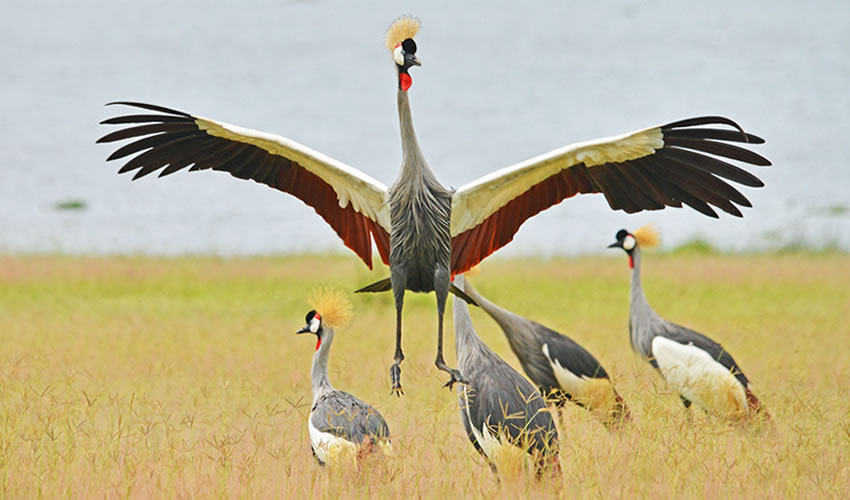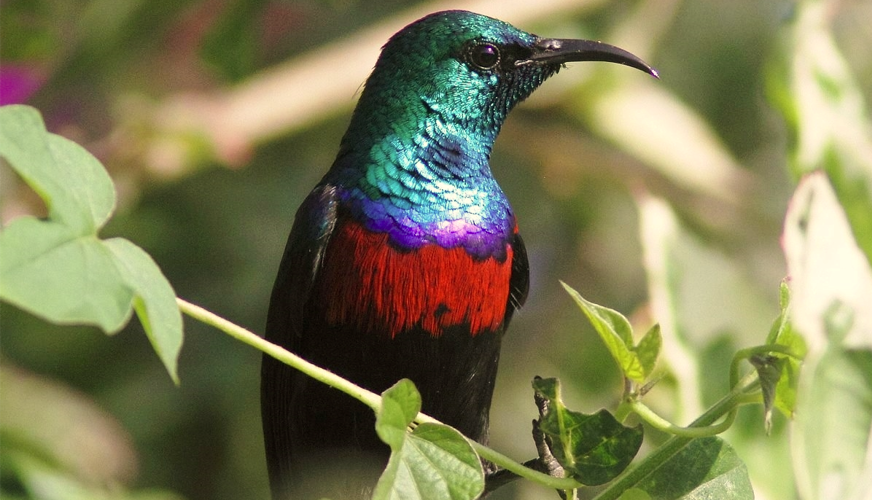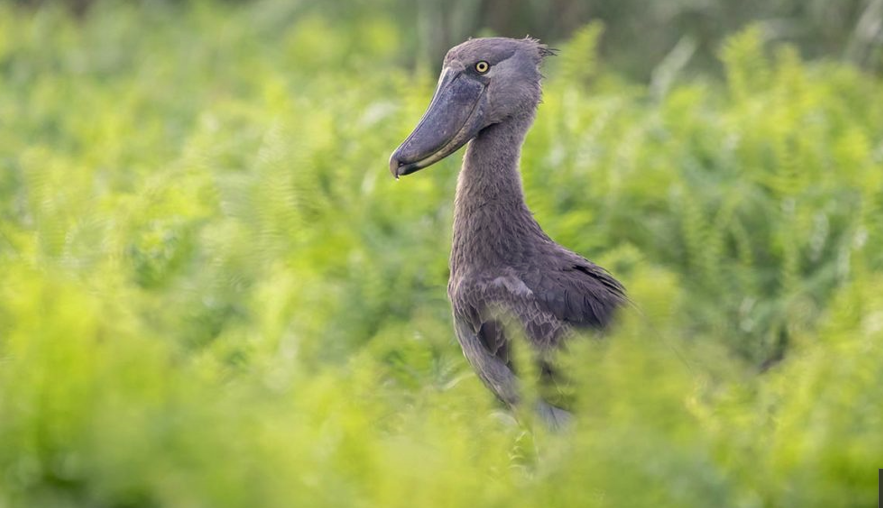Birding in Uganda has become one of the major safari attractions within the country, and it is a prominent destination for safari experiences. Uganda has got all of the diversity of species and some of the bird species are unique to the whole of the country. Uganda has several birding sites in Uganda, and this has made Uganda the most beautiful country in the whole of the African continent. The major birding sites in Uganda include Lake Mburo National Park, Kidepo Valley National Park, Budongo Forest, Queen Elizabeth National Park, Bwindi Impenetrable Forest National Park, Murchison Falls National Park, and the prominent Bigodi birding sites, as well as other birding species done within the Mubamba as well as the Lutembe bay on several water bodies, particularly Lake Victoria.
On game drives around the park or on a boat excursion to the bottom of the falls at Murchison Falls National Park, around 450 bird species may be spotted on game drives. Goliath herons, swamp fly catchers, red-throated bee-eaters, African quail finches, and a plethora of other bird species may be found here. Bigodi wetland is the ideal destination for birdwatching. This place is home to 375 species of birds, and some of the bird species include the black bee-eater, dusky-blue fly catcher, Grey-throated fly catcher, Red-chested owl, and many more.

The Crowned eagle, Yellow-spotted nicator, Black-capped Apalis, brown-chested Alethe, and Abyssinian ground thrush are among the prominent bird species found at Bigodi wetland sanctuary, which is located in Magombe swamp. In Kanyanchu, birding expeditions begin at 7 a.m. with briefing, and this means that you will be able to enjoy the bird watching safari, including various tourist activities, which are so very interesting.
Lutembe Bay is likewise located on the beaches of Lake Victoria and is well-known for birding in Uganda since it is a stopover point for migrating birds. A million different types of palearctic migratory and resident birds call this bay home. The African green pigeon, sooty chat, tropical boubou, road billed roller, and lead colored flycatcher are among them. The great blue, piping hornbill, red-billed dwarf hornbill, yellow-throated nicator, and shoebill stork may all be observed on Lake Albert in Semuliki National Park, which is located near Rivers Kirumia, Sempaya, and Ntandi.
Another interesting destination for the birding safari is the Queen Elizabeth National Park, which houses more than 610 species of birds. The African Fish Eagle, the pink-backed pelican, the papyrus canary, white-tailed lark, the Marital eagle, and white-winged warbler can be observed in sites like Maramagambo woodland, Kazinga channel, the Mweya peninsular, Kasenyi region, Katunguru bridge area, Lake Kikorongo, and Ishasha sector.

While on a birding excursion in Uganda, birders are particularly interested in the following birds: The shoebill, one of Africa’s most sought-after birds, is usually found in the marshy regions of Mabamba with fresh water wells. The African Green Broadbill, also known as the Grauers Broadbill, is one of Africa’s big five bird species in high demand by birders. It can be found in the Albertine region’s rift valley, specifically in Ruhija Bwindi forest. The Great Blue Turaco can be found in any savanna and sultry areas of montane forests, and the African Green Broadbill can be found in any savanna and sultry areas of montane forests. The standard winged night jar, the short-tailed warbler found in forest foliage, the Doherty’s bush shrike, the bar-tailed trogon, and the black-breasted barbet are all found in the Albertine rift valley region.
A bird watcher should bring a field guide book, ideally Birds of East Africa, a camera, voice recorder, binoculars, and a field bag. Birding is an activity that should not be overlooked when going on an expedition.


Comment (0)